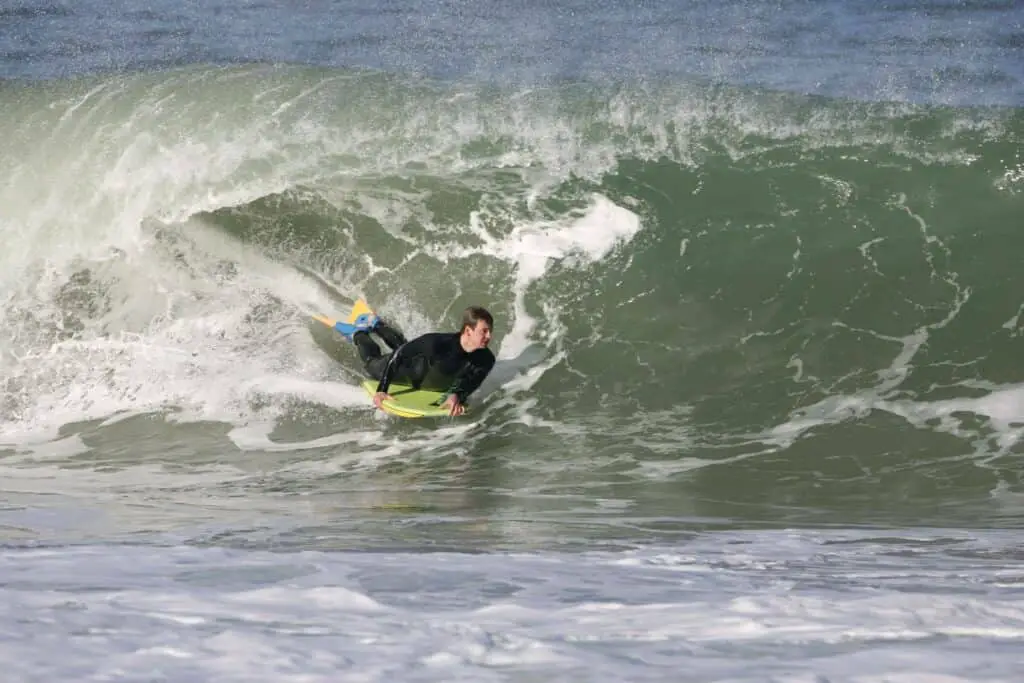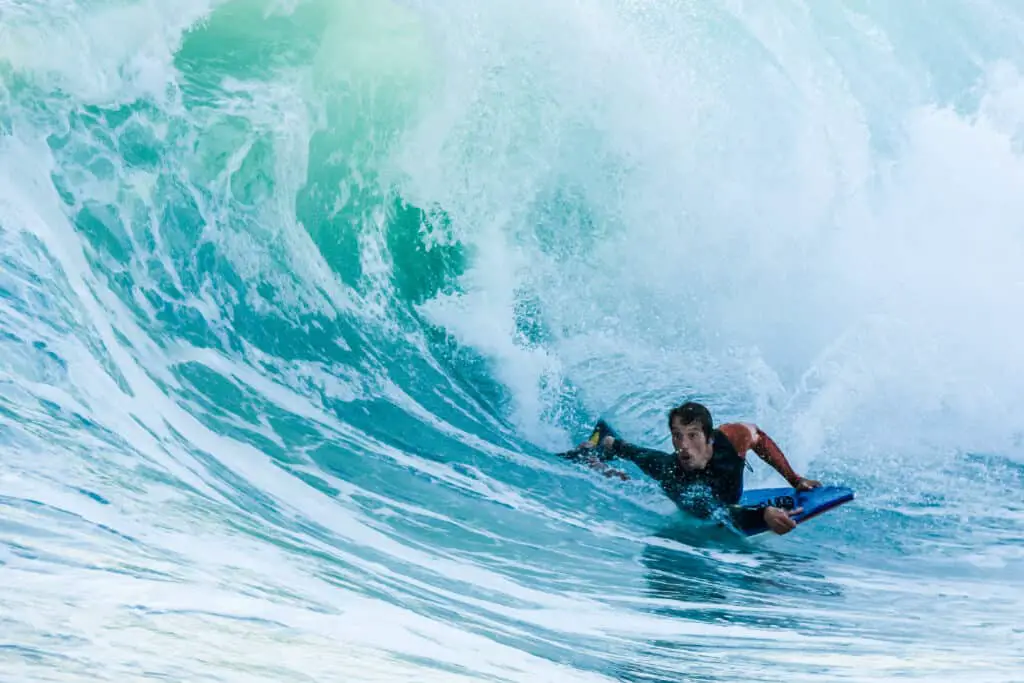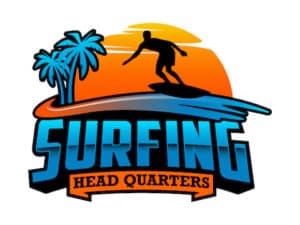Since their origin, there have been clashes and competition between surfing and bodyboarding. What makes this even more interesting is that both watersports originated at the same time and from the same region-the Hawaiian Islands.
As these sports become more popular, a debate has risen among fans on which of the two is better than the other. The debate seems to be tilting in favour of surfing which practitioners have claimed to be more difficult than bodyboarding.
The central premise for the argument is that bodyboarding is a lazy sport that doesn’t require as much effort and skill as surfing. While this may be true, there are always details we must consider.
Why don’t we explore these sports and let you pick your favourite?
Difference Between Surfing and Bodyboarding

While there are several similarities between these two sports, their differences outweigh them. The goal of both water sports is to catch and ride the waves using a board, and the required skill set is also somewhat identical: wave-catching ability, timing the take-off, positioning on the wave, good balance and turning skills.
However, bodyboarding and surfing significantly differ in many different aspects. They include:
| Surfing | Bodyboarding | |
| Execution | Standing/squatting | Prone, Kneeling (1 or 2 knees) |
| Waves | Any | Any but can ride steeper waves |
| Riding speed | Faster | Slower |
| Board types | Core foam and glassing | Core foam and plastic |
| Difficulty | Difficult for beginner | Easier to start with. |
| Safety | Ocean Risk + Risk of surfboard mishandling. | Ocean Risk +Dangerous manoeuvre. Safer for beginners with a lighter board. |
| Maneuvers | Variety of maneuvers using speed and rails of the board. | Unique maneuvers, such as El Rollo |
| Price (board only) | $400-2000+ | $50-600 |
| Fitness required | Arm paddling, Back and leg endurance. | Mainly leg endurance for fin kicks |
- Execution: While they both aim to catch the wave, a big distinction is that while you do this while standing when surfing, bodyboarding involves lying or kneeling on the board.
- Waves: Bodyboarders can catch more critically steep waves, but surfers can ride waves faster, allowing them to perform maneuvers, go over a section and go through the barrel more easily.
- Riding Speed: surfing boards provide a larger surface area for floating and gliding, which is enhanced by glassing. This helps them to travel faster on the wave.
- Board Type: Though they both use foam in their core, surfboards and bodyboards differ.
- The bodyboard’s core foam is covered in plastic (Surlyn) at the bottom. Core foam could be Polyethylene (PE), Polypropylene (PP) or expanded Polystyrene (EPS). The top and the rail of the bodyboard are made of soft foam. . Secondly, bodyboards are shorter and lighter to carry- they can be carried under arms, unlike surfboards.
- Surfboards’ core foams are either PE or EPS, completely covered by fibreglass and resin, giving a glass-like appearance.
- Learning Required: It is far easier to learn bodyboarding than surfing. Beginners who have no history with water sports can easily learn about bodyboarding. Bodyboarding does not require standing up after catching a wave; turning or changing direction can be done by simply leaning towards the side you want to turn. Furthermore, bodyboard fins provide great propulsion to catch waves easily.
- Safety: Both are not without risks, such as drowning. However, bodyboarding is generally safer. This is because the board is softer, slighter, smaller and easier to control than the surfboard. However, as bodyboarder progress their skills, some maneuvers are inherently dangerous: doing air and landing in the prone position.
- Stunts: Unlike bodyboarding, surfing allows participants to perform interesting tricks and maneuvers while surfing. It takes a good amount of skill to perform the variety of tricks available in surfing. Thus, surfers need to practice harder than bodyboarders.
- Price: Bodyboards are cheaper than surfboards. Bodyboards range from 50-600 dollars for a brand new board, whereas surfboard ranges from 400 to 2000+ for a new board.
- Fitness level: Bodyboarding requires strong leg endurance as they are the primary source of paddling. Bodyboarders also paddle like surfers, making their paddle more efficient than surfers. Surfers rely on upper-body paddling compared to bodyboarders, as surfers’ legs generally rest during the paddling except when extra power is required. Surfers must also lift their upper body during paddling, which requires low and upper back muscles to hold the torso up.
Should I Learn How to Bodyboard Before Surfing?

Generally, you do not need to try to learn a bodyboard before learning to surf. However, board boarding can help develop the timing of catching waves and how to position yourself in the wave, which will help you to progress quicker in surfing.
One reason why surfer progress is slow is due to a lack of wave catching. Beginner surfers cannot catch many waves due to poor stamina, positioning, and timing.
With body boarding, learning how to catch waves is much easier. One does not need to stand up during the takeoff; always remain prone. Furthermore, fins help you generate the necessary speed to catch the wave.
With this advantage, you can catch tons of waves and learn where the most power of the wave is coming from and learn to position accordingly.
Unfortunately, the wave-catching ability does not translate to surfing automatically; You do not wear fins while surfing and must also learn when and how to stand up during the takeoff.
Can You Learn How to Surf on a Bodyboard?
Using bodyboards or boogie boards to practice surfing can be very difficult. Two sports, though with some similarities, are essentially different and require different skills. To learn surfing, getting a longboard or mini-mal is recommended.
Surfer boards are built with a stronger material that can hold the weight while standing. These boards are also longer and heavier to match the riding style. This design helps you go faster on a wave than on a bodyboard.
On the other hand, bodyboards are shorter and lighter; they are designed to allow you to ride steeper waves and perform different maneuvers. This, however, is not very efficient at generating speed on the wave.
Do Surfers not Like Bodyboarders?

Most surfers and bodyboarders share the beach without issue. However, some areas/spots are prone to this conflict.
There are limited waves in the given time, and Often, bodyboarders and surfers can get into each other’s waves. To make things worse, surfers often call bodyboarders ‘spongers’, acknowledge the difference, and often make some jokes.
Some bodyboarders may not like surfers due to their false sense of superiority. While it’s true that surfing can be more technical and attract more media attention, bodyboarders charge into powerful and steeper waves than surfers.
Like any sport, bodyboarding requires fine skills to ride well, and it gets very technical as you get deeper into the sport. See the below videos for examples of high-level bodyboarding.
With the commercialisation of bodyboarding and the emergence of expert bodyboarders who perform difficult stunts, the watersport is gaining some respect and approval.
All surfers and bodyboarders should respect and adhere to good beach etiquette to get along with one another in a positive way.
Is Bodyboarding Harder than Surfing?

Bodyboarding has been viewed as an easier watersport compared to surfing. While it requires a good amount of fitness and skill, it is still relatively easier than surfing, especially during take-off. Surfing requires an extras skillset, such as pop-up, standing balance and turn, which may take some time to master.
Here are details reasons why surfing can be more challenging to learn.
Stability is crucial when riding a wave, and it is far easier to do when bodyboarding because it is performed lying down or sitting.
Paddling a bodyboard is far easier than paddling a surfboard because the board is smaller, allowing you to utilise fins on legs in the water. In addition to this, you can paddle with your arms to go faster. However, you can only use your hands to paddle the board for surfboards except when you kick to boost speed for a short period.
Take-off
After mastering the art of paddling, you need to practice catching and riding the waves. There is a huge difference between surfing and bodyboarding in terms of takeoff. Here are a few reasons why bodyboarding is more manageable than surfing during take-off.
- You do not need to pop up when bodyboarding and mastering pop-ups may take months.
- Paddling is easier: with fins and paddling with arms, you can generate forceful propulsion.
- Low Centre of gravity. You are very close to the water surface when bodyboarding, which will help you go down the slope when the wave is steep.
Riding the Wave: It is easier to ride the wave on the boogie boards as you are in a ‘prone’ position; that is, you are lying down. In this position, boarders can use their bodies to control the boogie board. This is more difficult to do when surfing as you only have your body weight and direct the board to where you want to go using your legs. Leaning side to side in the prone position is more intuitive than controlling your feet.
What makes Bodyboarding Hard?
Bodyboarding is not a complete walk in the park.
The watersport requires agile legs to paddle efficiently with the bodyboarding fins. If your legs are not fit enough, you might find this problematic.
In addition, tricks and stunts can be difficult; experienced bodyboarders do these. These maneuvers are also challenging to learn and acquire adequate practice and skill.
Bodyboard vs Surfing: Equipment Needed
Like every other sport, bodyboarding and surfing require specific equipment. Here is a quick summary of the minimal equipment required for surfing and bodyboarding.
| Surfing | Bodyboarding | |
| Board | Fibreglass board/foam board | Bodyboard |
| Board fin | Required | Not required |
| Leash | Leg(ankle) Leash | Arm leash |
| Wax | Required | Required |
| Flipper | Not required (except for knee board) | Required |
| Wetsuit | Required (Water temperature dependent) | Required (Water temperature dependent) |
Surfboards/Boogie boards: Having the correct type of bodyboard will improve your experience significantly. Generally, body boards are cheaper, but you still need to buy other equipment.
Ideally, the board’s nose height should be approximately the same as your belly button, or it’s the length from your knee to the chin. It should be easy to carry and fit under your arm. Here is an easy guide
Fins: These short-bladed fins are fairly rigid, allowing quick kicks in short spurts. Your swim fins should have an open heel to let water travel freely, and you should also make sure that it is comfortable.
Furthermore, go for lycra socks or booties made of neoprene, as they substantially increase comfort. You can also purchase fins with grips or velcro straps to avoid losing them.
Wetsuits: Wetsuits are excellent if you want to surf/bodyboard in colder climates. Additionally, neoprene will increase your buoyancy in the water and improve safety. There are various lengths and thicknesses of wetsuits, so go for the one you are comfortable with. Here is a quick guideline for wetsuits.
Pro tip: Make sure you try one. Every wetsuit has a slightly different body variant; you must put it on to be sure. Every manufacturer will provide size-fitting guidelines. If you are conscious of environmental protection, consider trying Patagonia Yulex Wetsuits. These are made of plant-based rubber as opposed to petrol-based neoprene.
Surfing and Bodyboarding are two exciting water sports; we cannot say one is better. Both sports are fun and exciting to enjoy the ocean and its waves. Go for one that suits your skills and start practising. Thanks for reading!

